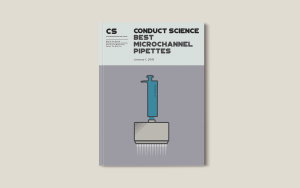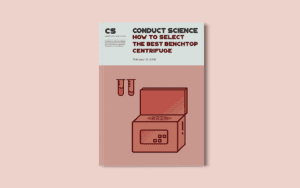
Best Microchannel Pipettes: A Comprehensive Guide
Introduction Pipetting, at first glance, would seem a fairly simple and easy task. Essentially described as glass or plastic tubes used to measure and transfer

Clinical laboratory utilization management is concerned with the effective use of resources while ensuring benefit to patients through the administration of appropriate tests at cost-effective rates. It requires the involvement of diverse parties including administrators, clinicians, laboratory personnel, and quality control professionals.
In the recent past, the term laboratory stewardship has been preferred for its more patient-centered approach, whereby the quality of service provided is of primary importance as compared to cost-cutting measures associated with laboratory utilization management. Effective lab stewardship can ensure that the diagnosis, treatment, and monitoring of disease are optimized and any downstream adverse events associated with errors in test ordering, retrieval or interpretation of results, and unnecessary incurred costs are mitigated.
In a clinical setup, there are five common programs of laboratory utilization stewardship/management, namely;
The laboratory is an integral component of clinical utilization management. There is a wide variety of tests available and clinicians may have difficulty efficiently navigating them, leading to medical testing overuse, misuse, and/or underuse. A collaborative effort between practitioners and the laboratory expertise with regard to the necessity of tests through a test utilization management program would ensure cost-effective use of laboratory tests and optimal patient care.
Ways in which the laboratory can help clinicians avoid underuse, overuse, and misuse of clinical laboratory services
There are a number of tools that a clinical laboratory can use to enforce utilization management and encourage proper and efficient use of tests. This includes the use of;
a. Reference laboratories
Reference laboratories perform tests on behalf of other labs. They mainly handle complex, non-routine tests while the institutional (local/home) labs perform routine, high-volume tests.
Outside lab testing can play a complementary role in test utilization management because of certain unique advantages, as follows;
b. Laboratory formulary for test restrictions
A lab formulary contains a list of tests physicians can order. It is a system, first utilized in pharmacy and drug prescription departments, to lower costs by encouraging the use of generic, instead of specialized, drugs. Laboratory formularies can be used to regulate both the tests performed locally in the establishment or those sent to reference labs.
The formulary is not set in stone and it should be evaluated and updated at least annually to identify changes such as the frequency of test requests, for example, non-crucial low volume tests can be removed from the formulary and transferred to reference labs. Other changes include the development of new tests, rendering the ones in the formulary obsolete. This is true, especially for those tests in the rapidly developing diagnostic areas.
Prior to addition to the formulary, tests are thoroughly reviewed and vetted by a committee that must include clinicians and laboratory staff. This is to ensure its diagnostic and therapeutic value, medical necessity, and the cost-effectiveness of the diagnostic/monitoring procedure.
c. Electronic medical record
This can be a useful tool in the monitoring and control of test utilization. Measures like;
These options limit misuse of tests, correct errors such as duplication of test orders or selection of wrong tests with similar names, for instance, a common mix-up occurs between the magnesium and manganese tests where beta-2-glycoprotein and beta-2-microglobulin are the test factors, respectively. An automatic prompt warning can pop-up wherever either of the two tests is selected to reduce the chances of a mistake.
d. Restriction on frequency and number of tests
Various reports have shown that clinicians often use too many diagnostic tests, both in variation and order frequency. This may be due to knowledge limitations of test expectations and scope, redundant lab test requests, or simply because they are trying to be rigorous.
There are various ways to limit this overuse, including;
This is when healthcare systems work to decrease antimicrobial resistance in the population by limiting the unnecessary use of antibiotics. It involves the use of guidelines, training, and appeals on prescribers to use evidence-based prescription of antimicrobials and appropriate tests. It is important to appoint a pharmacy expert to this stewardship program to lead, manage, and keep prescribers accountable through regular audits. They are also responsible for monitoring antibiotic prescriptions, tracking the impact of various interventions and reporting prescription trends and antibiotic resistance. Pharmacy experts leading the program are also in charge of educating patients and clinicians on the importance of optimum prescription, the dangers of antibiotic misuse, as well as side effects.
This encompasses a variety of interventions to improve drug therapy, most notably the use of pharmacy formularies that seek to substitute less expensive, but equally effective, drugs for more expensive drugs (generic substitution). Management techniques include;
This addresses the ordering, distribution, handling, dispensing, and administration of blood components. In addition, it also monitors the effects of transfusion on patients. Blood utilization committees have led to significant decreases in unnecessary transfusions as well as motivating the discovery that most patients have better outcomes when more conservative thresholds for red cell transfusion therapy are implemented.
The committee is composed of representatives of the departments that do the most ordering and transfusing of blood and blood components.
This includes a variety of interventions to decrease unnecessary and harmful imaging. Restrictive guidelines and interventions have led to the exposure of less cancer-causing radiation without a change in health outcomes… One such guideline is the implementation of the principle of “as low as reasonably achievable” where the radiologist is required to optimize image quality at the lowest reasonable dose. In addition, targeted educational curriculum with the cost and utilization data can influence the ordering practices of physicians and radiologists.
The eventual goal of laboratory stewardship programs is to help clinicians improve the quality of patient care while reducing costs to patients, hospitals, and health systems.
The main benefits of laboratory stewardship/utilization management are as follows;
The structure of a laboratory utilization team is as follows;
Ideally, the laboratory utilization team should be headed by a physician because physicians have in-depth medical knowledge to make judgments on what is best for the care of the patient. However, where one is not available, other laboratory personnel or administrators can lead the team.
Effective leadership and management require the following;
Ongoing measurement and communication of progress are critical attributes of successful utilization management programs.
The utilization management team should be composed of smaller hospital/laboratory committees like the general executive council, medical policy committee, and the clinical laboratory advisory committee. The laboratory advisory committee, which is composed of those with technical and applicability knowledge on tests approves the various utilization management initiatives and forwards them to the medical policy committee for final approval.
The members of the laboratory utilization management committee should;
Increased healthcare spending continues to be an issue of major concern to hospitals, patients, and medical insurance enterprises. Utilization management offers a series of methods to ensure the best patient outcomes through the appropriate use of healthcare resources. The focus of utilization management is the effective and appropriate utilization of resources, not the lowering of costs, through decreasing utilization. Whereas the overuse of high-cost facilities, like imaging, leads to losses to insurers, an overload of personnel, and underutilization, which has significant risks for patients. The implementation of clinical laboratory utilization stewardship endeavors to reduce variations in patients’ treatments and promote cost-effective clinical decision making.

Introduction Pipetting, at first glance, would seem a fairly simple and easy task. Essentially described as glass or plastic tubes used to measure and transfer

Resource Identification Initiative: A Key to Scientific Success and Analytics The key to success can be found in the essential principles of the Resource Identification

INTRODUCTION AND BRIEF HISTORY One of the most important pieces of equipment in the laboratory is the centrifuge, which facilitates the separation of samples of

INTRODUCTION AND BRIEF HISTORY One of the most important pieces of equipment in the laboratory is the centrifuge, which facilitates the separation of samples of






DISCLAIMER: ConductScience and affiliate products are NOT designed for human consumption, testing, or clinical utilization. They are designed for pre-clinical utilization only. Customers purchasing apparatus for the purposes of scientific research or veterinary care affirm adherence to applicable regulatory bodies for the country in which their research or care is conducted.